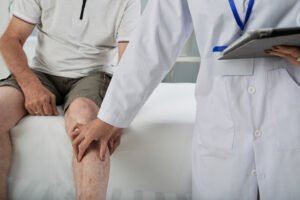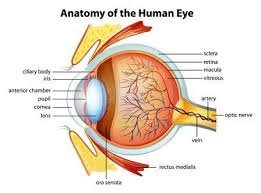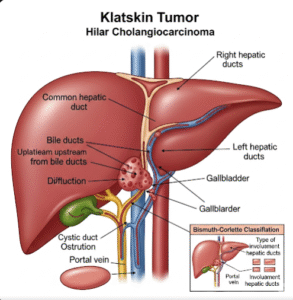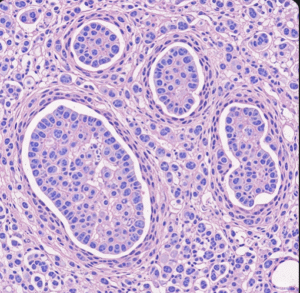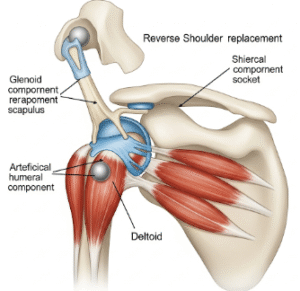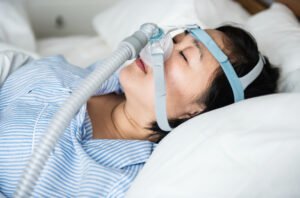Overview
Leg pain is a common symptom that can range from mild discomfort to severe, debilitating pain. It can affect the thigh, knee, calf, ankle, or foot, and may be acute or chronic. Causes vary widely, from muscle strain or overuse to circulatory, neurological, or joint disorders.
In Korea, hospitals and clinics provide advanced diagnostics and treatment for leg pain, including imaging, physical therapy, minimally invasive procedures, and surgical interventions. Early evaluation is important to relieve pain, treat underlying conditions, and prevent complications.
Key Facts
- ➔ Leg pain can result from muscle, joint, bone, nerve, or vascular problems.
- ➔ Pain may be localized or diffuse, sharp or dull, and may worsen with activity or at rest.
- ➔ Common causes include injury, arthritis, peripheral artery disease, nerve compression, and infections.
- ➔ Chronic leg pain can impact mobility, daily activities, and overall quality of life.
- ➔ Proper diagnosis ensures effective treatment and long-term management.
What is Leg Pain?
Leg pain is discomfort or distress in any part of the leg, which can be caused by various conditions:
- ➔ Musculoskeletal pain: Strain, sprain, overuse injuries, or arthritis.
- ➔ Neuropathic pain: Nerve compression or damage, such as sciatica or peripheral neuropathy.
- ➔ Circulatory causes: Poor blood flow due to peripheral artery disease or deep vein thrombosis.
- ➔ Infections or inflammation: Cellulitis, abscess, or inflammatory conditions.
- ➔ Referred pain: Pain originating from the spine, hip, or pelvis may radiate to the leg.
Understanding the type, location, and onset of pain helps healthcare providers determine the underlying cause.
What Symptoms Are Related To
Leg pain may be accompanied by other symptoms depending on the cause:
- ➔ Swelling or redness of the leg (vascular or inflammatory causes)
- ➔ Numbness, tingling, or weakness (neuropathic causes)
- ➔ Warmth or tenderness (infection or inflammation)
- ➔ Cramping, especially at night or during activity (circulatory or muscular causes)
- ➔ Limited range of motion or joint stiffness (arthritis or injury)
- ➔ Skin changes such as discoloration or ulcers (vascular issues)
Identifying associated symptoms helps narrow down whether the origin is muscular, neurological, or vascular.
What Causes / Possible Causes
Several conditions can lead to leg pain:
- ➔ Muscle strain or overuse: Common in athletes or physically active individuals.
- ➔ Arthritis: Osteoarthritis, rheumatoid arthritis, or gout affecting the joints.
- ➔ Peripheral artery disease (PAD): Reduced blood flow causing cramping and fatigue in the legs.
- ➔ Sciatica or spinal nerve compression: Pain radiating from the lower back down the leg.
- ➔ Deep vein thrombosis (DVT): Blood clots in the leg veins causing swelling, redness, and pain.
- ➔ Infections: Cellulitis, abscess, or osteomyelitis.
- ➔ Trauma or fractures: Injury to bones, ligaments, or tendons.
- ➔ Chronic conditions: Diabetes-related neuropathy or vascular complications.
Correct diagnosis is essential to prevent complications such as permanent nerve damage, impaired circulation, or mobility issues.
When Should I See My Doctor
Seek medical attention if leg pain is:
- ➔ Severe, sudden, or persistent
- ➔ Accompanied by swelling, redness, warmth, or tenderness
- ➔ Associated with numbness, tingling, or weakness
- ➔ Pain occurs after trauma or injury
- ➔ Accompanied by fever or signs of infection
- ➔ Impairing daily activities or mobility
Early evaluation can help identify serious conditions like DVT, arterial blockage, or nerve compression and prevent long-term complications.
Care and Treatment
Treatment depends on the underlying cause of leg pain:
- ➔ Muscle or joint pain: Rest, physiotherapy, ice or heat therapy, and anti-inflammatory medications.
- ➔ Arthritis: Pain relievers, physical therapy, joint injections, or surgical interventions if severe.
- ➔ Peripheral artery disease: Lifestyle changes, medications to improve blood flow, or vascular procedures.
- ➔ Nerve-related pain: Medications for neuropathy, physiotherapy, or surgery for nerve decompression.
- ➔ Deep vein thrombosis: Anticoagulants, compression stockings, and monitoring for complications.
- ➔ Infections: Antibiotics or surgical drainage if necessary.
Supportive care, including weight management, exercise, and ergonomic adjustments, can improve recovery and prevent recurrence.
Treatment Options in Korea
Korean hospitals provide comprehensive care for leg pain:
- ➔ Diagnostic imaging: X-rays, MRI, CT scans, and ultrasound to detect bone, joint, or vascular issues.
- ➔ Laboratory tests: Blood tests to identify infections, inflammation, or metabolic disorders.
- ➔ Minimally invasive procedures: Angioplasty, joint injections, or nerve decompression as needed.
- ➔ Physiotherapy and rehabilitation: Personalized exercise programs for muscle strengthening, flexibility, and mobility.
- ➔ Surgical options: Orthopedic surgery, vascular interventions, or repair of fractures and ligaments.
- ➔ Multidisciplinary care: Collaboration between orthopedists, neurologists, vascular surgeons, and physiotherapists for a personalized treatment plan.
Leading hospitals such as Seoul National University Hospital, Asan Medical Center, and Samsung Medical Center offer state-of-the-art diagnostics and treatment plans for both acute and chronic leg pain.
In Summary: Leg pain can result from musculoskeletal, neurological, vascular, or infectious causes. Timely evaluation, accurate diagnosis, and treatment in Korea can relieve pain, address underlying conditions, and improve mobility and quality of life.
- ➔ Key Takeaway: Persistent or severe leg pain should be evaluated promptly to prevent serious complications.
- ➔ Action Point: Consult a specialist in orthopedics, neurology, or vascular medicine for proper assessment and tailored treatment.


